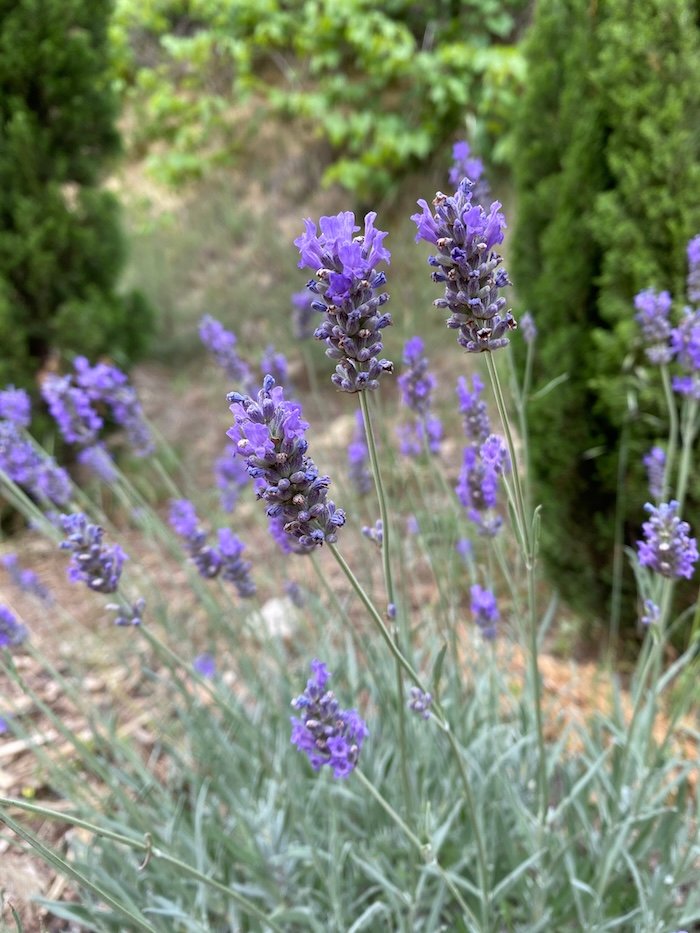One of the quintessential Mediterranean plants, lavender comes in a variety of types, differing in size, height, and blooming season. It is not easy to tell them apart and depending on where you buy them they may all just be called “Lavande” (this is my major beef with most regular garden centers).
All lavenders are rather or even very drought resistant and flourish in dry, alkaline*, and well-drained soil.
So far I’ve successfully tried (that I know of):
Lavandula intermedia “Grosso” and “Dutch“
Also called “Lavandin”, this is an aromatic hybrid cross of lavandula latifolia (Portuguese lavender) and lavandula angustifolia (English lavender). It is both cold- and heat-tolerant and grows relatively large with heights of 70-100 cm and widths of 80-100 cm. It is supposed to bloom in June and July and even September. Frosthardy to -14 °C.
Lavandula dentata
“French Lavender” is a Mediterranean native. It grows to 80x80cm and blooms from February through June and September through November – or even year-round in mild climates. It is not as aromatic as other types and its scent is reminiscent of camphor or rosemary. Can withstand frost of up to -7 °C.
Lavandula allardii «African Pride»
A very aromatic cross between lavandula latifolia (Portuguese lavender) and lavandula dentata (French lavender). One of the largest lavenders, growing to 150 cm wide and 100 cm high and blooming from April to October. Can withstand short frosts of up to -8 °C.
Lavandula ginginsii Goodwin Creen Gray
A very aromatic cross between lavandula lanata (Spanish lavender) and lavandula dentata (French lavender). Its leaves are a bit wooly and irregularly toothed. In very hot weather spring leaves may be replaced in summer by very small leaves, tightly set along the stems. Grows to about 60 cm wide and 70 cm high. Can withstand short frosts of up to -8 °C in dry soil.
Lavandula chaytorae Silver Sands
Compact groundcovering (40×40 cm) type with wooly silvery leaves and luminous flowers. Its allelopathic properties keep weeds in check. Blooms from June to August. Frosthardy to -14 °C.
In choosing additional varieties in the future I want to concentrate on large lavender types that bloom a long time, which is why I decided against Lavandula lanata, losae, latifolia, intermedia, angustifolia…
*And Lavandula stoechas is of course a no-go for my garden because it alone among all lavenders needs acidic soil.
Some gardeners report difficulties in keeping lavender alive. So far I’ve not had any problems. It is important to keep in mind:
- Do not water beyond the first summer.
- When watering, water well but not too often and only during dry weather. Do not wet the plant itself, pour the water around the foot of the plant.
- Make sure soil is well-draining. Mulch with coarse sand or gravel around the foot of the plant.
- Do not feed. If for some reason you do need to feed, use organic plant food with long-term effect.
- Cut, cut, cut: Cut after the flowers are finished and before the growing season starts in spring. Cut off flower stems in summer and cut back at least 1/3 of the height in spring.
Do not cut into the woody part of the plant, unless it’s a measure of last resort in saving an old overgrown plant (sometimes it does work).


Leave a Reply